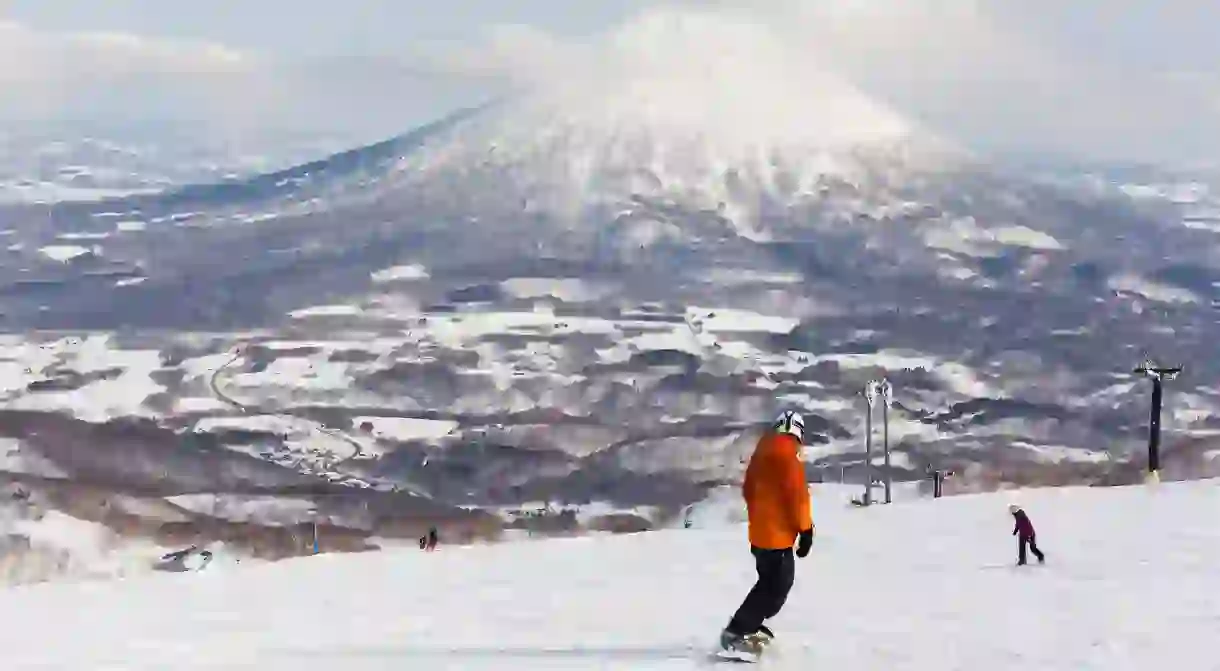10 Reasons To Book a Wintertime Trip to Japan

Japan embraces the wintertime like few other countries, making it a fine time to visit. From snow monkeys and pretty villages to perfect skiing and cockle-warming hotpots, here are 10 reasons to book that winter trip to Japan.
By visiting in wintertime, you’ll beat the crowds
Japan is an increasingly popular destination. The spring sakura and autumn koyo attract millions of tourists each year, while the summer holidays for many other nations mean kids and families have more free time to travel. By visiting in the winter, travellers can experience a totally different side of Japan and avoid the madding crowd. Traditional Japanese architecture is calm-inducing enough as it is, but when it’s dusted with snow, you’re into the realms of the blissfully serene.

You can strap on your skis and tackle the Japanese Alps
Japan has more than its fair share of mountains, so it’s only natural that the skiing, snowboarding, skating and other winter sports available are some of the best in the world. The northern island of Hokkaido is particularly renowned for its ski resorts and powdery snow. But even if you’re sticking to Honshu, a lot of that island’s major resorts are within an easy train ride of Tokyo, Osaka or Nagoya. Good options close to Tokyo include Naeba and Gala Yuzawa.

It’s the best time of year to soak in a steaming hot onsen
Wintertime in Japan would be nothing without its legendary onsen (hot springs). Whether it’s a small local spring, a five-star resort or an entire town built around the industry – such as Kusatsu – onsen are a fabulous way to embrace the wintertime. Opt for an outdoor onsen on a snowy day – it doesn’t get much more magical than soaking in steaming hot waters with snow fluttering all around you.

You’ll be able to indulge in some wintertime comfort food
Japan loves its seasonal specialities, and some things are only available during the coldest time of the year. As the temperature drops, restaurants and combini bust out their take on oden, a hot, healthy and filling snack made from soy-braised vegetables, meat and tofu products. And while technically available year-round, hotpots (nabe) and hot sake are best enjoyed on chilly evenings.

Catching Sapporo’s beautiful Yuki Matsuri snow festival is an option
Sapporo, the largest city on Hokkaido, transforms annually into a true winter wonderland for its snow festival, a celebration that attracts over 2 million visitors each year. Lasting for one week in February, the event features illuminations, skating and games – but it’s the snow sculptures for which the festival is really famous. Teams representing their countries come from all over the world to compete, creating enormous works of art made of nothing but ice and snow. Arrive in town a week or so early, and you’ll be able to gape at the teams’ progress, with the sculptures emerging into recognisable forms.

There are winter illuminations galore
Illuminations and light shows bring out the beauty of an otherwise bare wintry landscape. Large cities such as Tokyo and Osaka are famous for their seasonal illuminated decorations, but most cities will have spectacular displays. In Tokyo, outdoor displays like the ones in Ueno or outside Roppongi Hills are one of the best ways to enjoy the season.

You can snap up a fukubukuro (lucky bag)
Sometimes known as ‘lucky bags’ or ‘happy bags’, fukubukuro usually go on sale on 2 January, with people lining up outside stores for hours for their chance to grab the most popular ones. The appeal is that the value inside the bag far outweighs the price you pay. The catch is that you don’t get to choose what’s inside, so it’s a gamble. Most clothing stores offer fukubukuro that can be pre-ordered online, and even the Apple stores in Japan have lucky bags.
Some of Japan’s wildlife is at its most gorgeous
Many animals are in their element come wintertime. The Snow Monkey Park or Jigokudani Yaen-koen is full of the famous red-faced monkeys soaking in the park’s many onsen, while in Hokkaido, the Tsurui-Ito Tancho Sanctuary is home to red-crowned cranes gathering for their annual mating dances.

The mountain views are at their peak
With the cold air keeping cloud cover to a minimum, wintertime is the best season to see the mountains surrounding the cities, including Mount Fuji. The quiet and sound-absorbing properties of snow also make it the perfect season for meditative hikes in the countryside, urban flânerie or a little forest bathing (shinrin–yoku).

It’s the best time of year to visit the pretty village of Shirakawa-go
Shirakawa-go is a small, traditional village in Gifu Prefecture. The homes have tall pointed roofs in the gasshō-zukuri style. In winter, the area looks like a scene from a Christmas card; head up to the observation point above the village to take it all in. Together with Gokayama, the historic settlement is a UNESCO World Heritage site.














